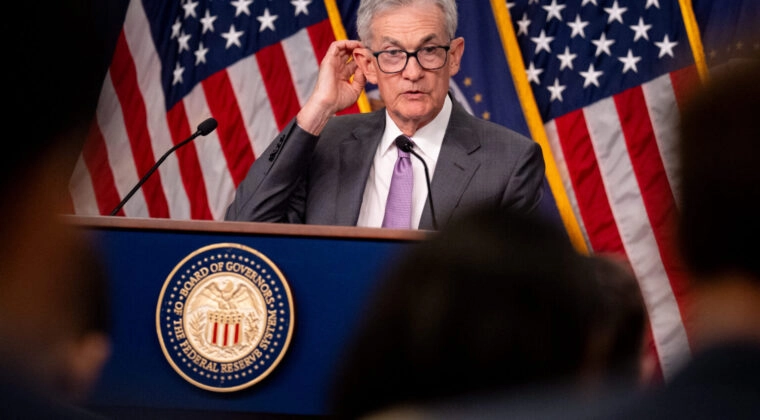-
- Trading Platforms
- PU Prime App
- MetaTrader 5
- MetaTrader 4
- PU Copy Trading
- Web Trader
- PU Social
-
- Trading Conditions
- Account Types
- Spreads, Costs & Swaps
- Deposits & Withdrawals
- Fee & Charges
- Trading Hours

The U.S. retail sales for October rose by 0.4% month-over-month, surpassing the market expectation of 0.3%. This marks the continuation of robust consumer spending, with retail and food services sales growing from $716.03 billion in September to $718.87 billion. Contributing factors include a stable labor market, moderate wage growth, and a shift towards online shopping, as seen in strong e-commerce performance. The upcoming release of November retail sales is also expected to show a slight increase, driven by holiday season sales and seasonal adjustments.
In November, the Federal Reserve announced a 0.25% rate cut, lowering the target range for the federal funds rate to 4.50%-4.75%. This follows a 0.5% reduction in September and marks a shift in the Fed’s focus from addressing high inflation to promoting economic growth. The central bank highlighted that inflation is moving toward its 2% target, and the labor market is stable, with unemployment remaining at 4.1%. However, core inflation, especially in housing costs, persists. Looking ahead, the Fed may continue to reduce rates in 2025, although the pace of cuts is expected to slow as decisions will be guided by data, particularly regarding inflation and the labor market. Another rate cut in December is anticipated.
In October, the Bank of Japan (BoJ) kept its short-term interest rate at 0.25%, a move that was widely anticipated by the market, reflecting a cautious approach in light of mixed economic signals. Although inflation is close to the BoJ’s 2% target, the bank expressed concerns about global economic risks and emphasized the importance of ensuring sustainable wage growth before considering further rate hikes. Analysts predict that the BoJ may raise rates in early 2025, though political and economic factors could impact the decision. The upcoming December meeting is expected to maintain policy continuity, with the BoJ waiting for clearer signs of wage growth or economic stabilization.
In its November 2024 meeting, the Bank of England (BoE) decided to lower its key interest rate by 25 basis points to 4.75%, marking the second reduction since August. This move reflects the BoE’s response to decreasing inflationary pressures, with UK inflation dropping to 1.7% in September, below the BoE’s 2% target. The decline was driven by lower energy prices and a cooling labor market. Additionally, expansive fiscal policies introduced by the government have raised concerns about potential inflationary effects in the medium term. Looking ahead, the BoE is expected to keep interest rates steady in the coming week, opting for a slower approach to reducing borrowing costs compared to central banks in Europe and the United States. Policymakers have also indicated that any future rate cuts will be gradual.
Step into the world of trading with confidence today. Open a free PU Prime live CFD trading account now to experience real-time market action, or refine your strategies risk-free with our demo account.
This content is for educational and informational purposes only and should not be considered investment advice, a personal recommendation, or an offer to buy or sell any financial instruments.
This material has been prepared without considering any individual investment objectives, financial situations. Any references to past performance of a financial instrument, index, or investment product are not indicative of future results.
PU Prime makes no representation as to the accuracy or completeness of this content and accepts no liability for any loss or damage arising from reliance on the information provided. Trading involves risk, and you should carefully consider your investment objectives and risk tolerance before making any trading decisions. Never invest more than you can afford to lose.

Trade forex, indices, metal, and more at industry-low spreads and lightning-fast execution.
Sign up for a PU Prime Live Account with our hassle-free process.
Effortlessly fund your account with a wide range of channels and accepted currencies.
Access hundreds of instruments under market-leading trading conditions.
Please note the Website is intended for individuals residing in jurisdictions where accessing the Website is permitted by law.
Please note that PU Prime and its affiliated entities are neither established nor operating in your home jurisdiction.
By clicking the "Acknowledge" button, you confirm that you are entering this website solely based on your initiative and not as a result of any specific marketing outreach. You wish to obtain information from this website which is provided on reverse solicitation in accordance with the laws of your home jurisdiction.
Thank You for Your Acknowledgement!
Ten en cuenta que el sitio web está destinado a personas que residen en jurisdicciones donde el acceso al sitio web está permitido por la ley.
Ten en cuenta que PU Prime y sus entidades afiliadas no están establecidas ni operan en tu jurisdicción de origen.
Al hacer clic en el botón "Aceptar", confirmas que estás ingresando a este sitio web por tu propia iniciativa y no como resultado de ningún esfuerzo de marketing específico. Deseas obtener información de este sitio web que se proporciona mediante solicitud inversa de acuerdo con las leyes de tu jurisdicción de origen.
Thank You for Your Acknowledgement!